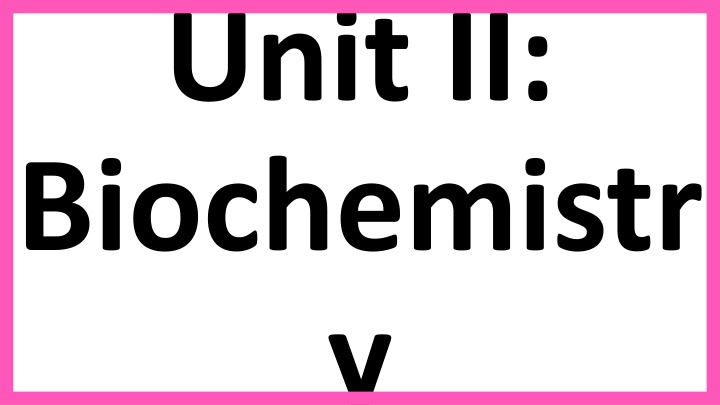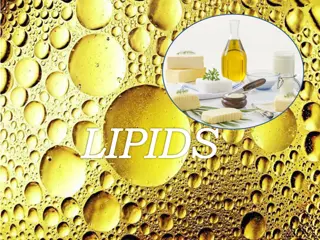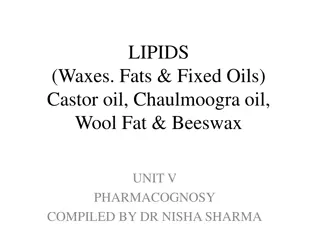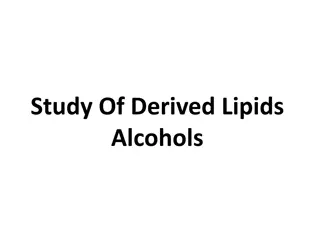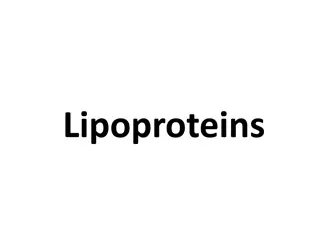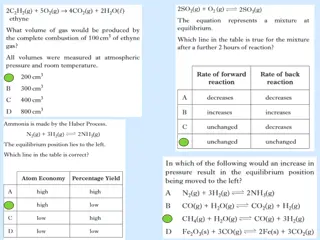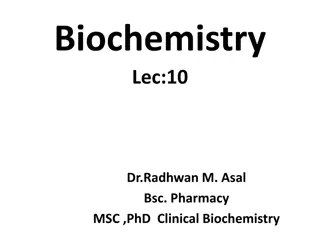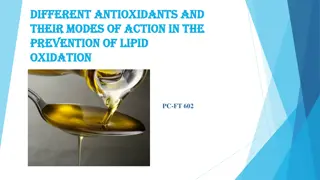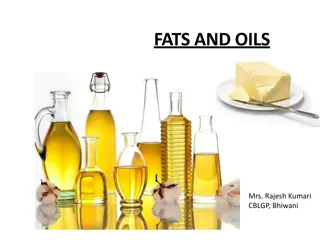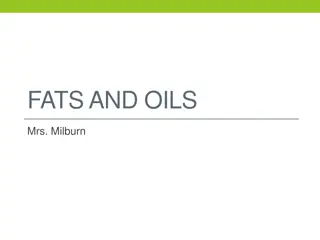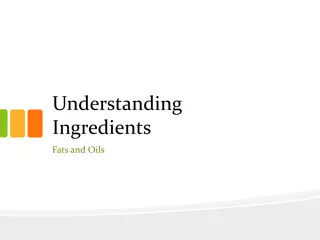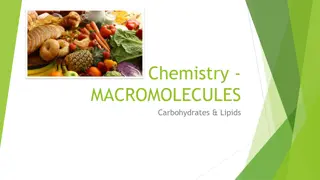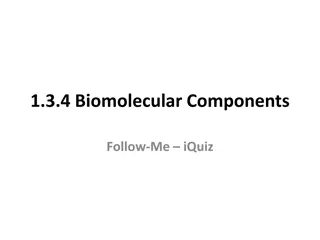Lipids: The Role of Fats and Oils in Biochemistry
Lipids, such as fats and oils, are essential macromolecules classified for their hydrophobic nature. Explore the significance of lipids in storing energy, learn about saturated and unsaturated fatty acids, and discover the biological importance of unsaturation. Find out why saturated fats tend to melt at higher temperatures and how they can impact your health.
Download Presentation

Please find below an Image/Link to download the presentation.
The content on the website is provided AS IS for your information and personal use only. It may not be sold, licensed, or shared on other websites without obtaining consent from the author.If you encounter any issues during the download, it is possible that the publisher has removed the file from their server.
You are allowed to download the files provided on this website for personal or commercial use, subject to the condition that they are used lawfully. All files are the property of their respective owners.
The content on the website is provided AS IS for your information and personal use only. It may not be sold, licensed, or shared on other websites without obtaining consent from the author.
E N D
Presentation Transcript
Unit II: Biochemistr y
Part VI: macromolecules - Lipids
What Foods Can you Think of that Contain Lipids?
Lipids Classified because they re hydrophobic- repel water These molecules further sub classified as: Fats and oils Phospholipids
Fat (Triglyceride) and Oil Function: Storage of energy Composition: Made from two kinds of molecules glycerol & fatty acids Three fatty acids joined
Fatty Acids in Fat Molecules Vary in length and the number and position of double bonds Saturated fatty acid: no double bonds Unsaturated fatty acid:
Degree of Unsaturation Greater number of double bonds lowers the melting point Number of double bonds: Zero solid @ room temperature and @ 4 C Ex. Butter Single liquid @ room temperature, solid @ 4 C Ex. Olive Oil
Biological Significance Unsaturated fatty acids do not form solids at room temperature Double bonds in fatty acid chains prevent chains from stacking up and interacting Result does not form solid; remains a liquid Why unsaturated fatty acids
Activity What is it about the shape of saturated fats that make them: Melt at higher temperature? Clog up your arteries? Hint: Think of many fat molecules grouped together
Important part of animal diet Animals primarily use fat for energy storage. Why? Fat Stores 9 Kcal/g of energy Kcal = Cal = 1000 cal Cal = energy to raise 1g of water 1oC Carbohydrates & Proteins Store only 4 kCal/g of energy Fat also used in our bodies to Cushion vital organs like kidneys Provide insulation, especially under skin
Phospholipid Composition Made from glycerol, two fatty acids, and a phosphate group Considered an amphipathic molecule Both a hydrophilic end
Function of Phospholipids Part of cell membrane creates a lipid bilayer Hydrophilic heads Hydrophobic tails
Steroids Composition Consists of four fused rings Function Chemical Signal Examples Sex Hormones testosterone, estrogen
Answer ?s in Note Guide
